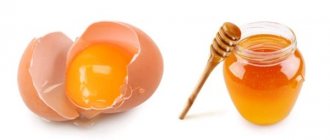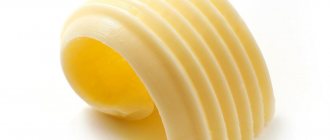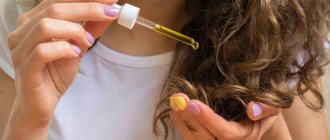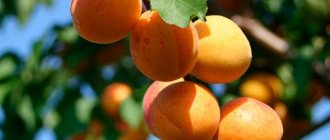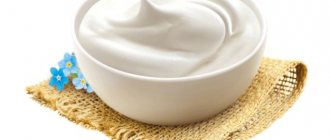Argan oil is oil from the seeds of the prickly argan, which grows only in Morocco and Algeria, on the border of the Great Sahara Desert, in the area inhabited by the Berber tribes. The population of this tree on the planet is about 2 million trees. This hardy tree is a real “tree of life” for local residents, as it provides them with food, feed for local goats, medicine, cosmetics, fuel, building material, and furniture raw materials.
How is argan oil obtained?
Argan oil is considered one of the most expensive vegetable oils in the world. The process of obtaining it is very labor-intensive. First, fruits are collected from thorny trees, which appear once every two years. The seed is obtained from the fruit by cleaning the pulp.
Content:
- How is argan oil obtained?
- Chemical composition
- Beneficial features
- Hazardous properties
- When and how to take it?
- Benefits for the skin
- Benefits for hair
- Use in cooking
- Conclusion
Often, to simplify this stage, Berbers collect goat droppings, from which they take out a cleaned and softened bone. The collected seeds are crushed, dried under the scorching sun, roasted (if necessary) and ground into flour using stone millstones. The flour is mixed with water and then the oily liquid is squeezed out.
The product, obtained in artisanal conditions, is manufactured in exactly this way. In industrial production, all processes, except for collecting and cleaning the stones, are carried out in automatic installations.
The yield of the final product is small: to obtain 1 liter of argan oil, 80 kg of fruit must be processed. No more than 12 million liters of this product are produced per year. The market price of one liter is about 60 euros.
There are the following types of argan oil:
- From roasted seeds. This product is used exclusively for culinary purposes. It has a golden color and a pronounced nutty aroma.
- From unroasted seeds. It is this oil that retains all the beneficial properties of argan. It is light in color and practically odorless.
The fact that the seeds are roasted during the oil production process should be taken into account when purchasing in order to get the expected effect from the product and avoid adverse reactions.
What to look for when buying oil
Like each of the very expensive and rare oils, argan oil is very often counterfeited. Unscrupulous manufacturers replace real oil with analogues diluted with other bases or completely falsified chemically synthesized products.
When purchasing, it is extremely important to choose trusted stores and sources, carefully study the certificates, make sure that there are money-back guarantees, and that all the necessary legal information is available. One of the most important parameters for identifying counterfeit argan oil is studying the composition, information about the origin of raw materials and the method of production, laboratory examinations and quality certificates.
Where to buy?
You can only buy argan from manufacturers whose aroma products you have personally verified as quality.
This oil is also sold in culinary departments, but the characteristics of cooking oil are somewhat different from cosmetic ones in terms of the degree of rancidity. For such oil, it is important to check the composition and presence of preservatives, additional components and certificates confirming its high quality.
Name and markings
This base can only be labeled as “argan oil” (argan oil) or “argan oil” (with the synonymous analogue “ironwood”).
Foreign names: argan oil (English), lhuile d'argan (French).
The Latin label for the plant is argania spinosa . Any other signatures and clarifications can be considered evidence of falsification.
Plant and regions of production
Argan is characterized by a limited production area: unique oil is extracted only in one country in the world - Morocco. This is explained by the extremely narrow natural distribution range of the argan tree, which grows only in the river valley located on the southwestern border of the legendary Sahara.
African argan, which is the main source of oil for Morocco not only for cosmetic but also for culinary purposes, is better known there as ironwood. For the local population, argan is historically the main nutritious oil, an analogue of European olive and any other fats of plant origin.
To extract oil, they use kernels, which are hidden in several pieces in the hard seeds of the fleshy argan fruits.
Receipt method
Argan oil is obtained by cold non-extraction pressing, preserving as much as possible the beneficial substances and unique components of the kernels. And only such a product can boast inimitable characteristics: any second or hot-pressed oil can be considered a fake.
Despite the fact that the oil yield is not so small (from 1 to 3%), limited natural plantings of argan cause high production costs.
Chemical composition
Argan oil is similar in composition to olive, peanut or sesame oil. Moroccan product contains:
- mono- and polyunsaturated fatty acids (oleic - up to 60%, linoleic - up to 35%, linolenic), which can prevent atherosclerosis and slow down cell aging;
- saturated fatty acids (palmitic – up to 15%, stearic – up to 10%, myristic);
- vitamins A, , ;
- polyphenols (vanillic, ferulic acids, myricetin, quercetin);
- squalene;
- phytosterols (schottenol, alpha-spinasterol);
- triterpene alcohols.
Provitamin A, a precursor to fat-soluble vitamin A, increases elasticity and protects the skin from keratinization and harmful sun exposure.
Tocopherol (vitamin E) prevents cell damage from free radicals, promotes their regeneration, strengthens capillary walls, and reduces the inflammatory process. The tocopherol content in argan oil is 2-2.5 times higher than its content in olive oil.
Polyphenols are strong antioxidants and have an antibacterial effect. They effectively absorb ultraviolet rays, preventing skin photoaging.
Squalene is an active organic compound involved in the synthesis of steroid hormones and vitamin D in the body. In the skin, squalene protects epidermal cells from oxidative processes, reducing signs of skin aging.
Phytosterols have the ability to stimulate the production of collagen fibers and reduce inflammation in the skin.
Use of argan oil after childbirth and during pregnancy
The oil can be used externally during pregnancy and while breastfeeding (provided there is no allergic reaction). This oil is extremely rich in vitamin E and helps new mothers prevent the appearance of stretch marks during pregnancy, as well as make them visually less noticeable after childbirth.
It promotes increased blood circulation and activates the processes of epithelization and granulation of the skin, where it is needed.
Beneficial features
The beneficial properties of argan oil are due to its rich composition. It has the ability:
- improve digestion;
- suppress hunger;
- restore liver cells;
- remove toxins from the body;
- strengthen immunity;
- normalize blood microcirculation;
- stabilize blood pressure;
- restore the synthesis of steroid hormones;
- reduce blood cholesterol levels;
- increase potency;
- normalize the functioning of the reproductive system.
Argan oil is a source of many substances essential for the human body, so its use internally and externally has a beneficial effect on metabolism in tissues and organs.
Hazardous properties
The freshly squeezed product does not contain any harmful or toxic substances. They can appear during industrial bottling, when preservatives to which an allergy can develop can be added to increase shelf life.
It has been noted that allergies to argan seed products often occur in people who are allergic to nuts. Studies have shown that argan oil contains a specific 10kDa protein, which is a strong allergen. This protein is also found in nuts, including peanuts, suggesting that it is responsible for this cross-allergic reaction.
To avoid side effects of an argan product, you should carefully read the label on the bottle before purchasing:
- It must contain information in a language understandable to the buyer.
- The method of processing the seeds (unroasted, fried) must be indicated.
- There must be information about the chemical composition, including preservatives, fragrances, water content (they should not be in natural oil!).
- Pay attention to the date of manufacture and expiration date (expiration date cannot exceed 12 months).
- The place of manufacture of the product must be indicated - Morocco or Algeria (argan raw materials are prohibited from being exported from these countries; only the product can be exported).
- The bottle should be hermetically sealed and made of dark-colored glass and hermetically sealed (this prevents oxidation).
Be very suspicious of label claims that 10kDa protein is extracted from oil. To extract protein from oil, it is necessary to act on it thermally or chemically, after which the oil can no longer be considered natural, because the oil undergoes irreversible changes.
The method of collecting the seeds for the Moroccan product also matters. If the oil is made in artisanal conditions, there is a possibility that the pits for it were collected from goat droppings. Goat droppings can introduce toxic substances and bacteria into the product, making the product potentially hazardous to health. It is better to give preference to the product of large manufacturers.
You should refrain from taking argan oil internally in childhood (up to 6 years) and in certain physiological conditions (pregnancy, breastfeeding), since the digestive system and immunity function in a special way during these periods of life.
Where can I buy
You should buy organic argan oil from trusted suppliers, because counterfeits of the drug are very common. A wide range of products are offered by pharmacies, online stores, and cosmetic stores. Experts recommend avoiding purchasing the product in the supermarket.
The following representatives of natural extract in Russia have proven themselves well in the modern market: Divoil, MeiTan (Meitan).
The original product does not require special storage requirements; it perfectly retains its original nutritional properties in dark glass packaging. The shelf life of the oil is 2 years.
Attention! High-quality argan extract is not characterized by stickiness, stickiness, pungent odor or lack thereof. The presence of such factors should alert you. The oil has a delicate, uniform texture and a subtle and unobtrusive nutty aroma.
It is not recommended to use a product that has expired.
When and how to take it?
Argan oil can be taken internally and externally. For internal use for medicinal purposes, preference should be given to a product made from unroasted seeds. It is not subjected to heat treatment, therefore it contains beneficial substances in unchanged form.
Indications for taking argan oil internally are:
- cardiovascular diseases (atherosclerosis, arterial hypertension, coronary heart disease, thrombophlebitis, varicose veins);
- pathologies of the digestive system (gastritis, colitis, hepatitis, cholelithiasis, constipation);
- inflammatory diseases of the ENT and respiratory organs (rhinitis, tonsillitis, sinusitis, pharyngitis, bronchitis);
- prevention of seasonal colds;
- metabolic disorders (diabetes, obesity);
- eye diseases (decreased visual acuity, blepharitis, conjunctivitis, cataracts, twilight vision impairment);
- dysfunctions of the reproductive system (impotence, deterioration of sperm quality, menstrual irregularities).
The literature also contains information about the preventive anticancer effect of argan oil.
For the oil to have its healing effect, it must be taken on an empty stomach. The dosage at the beginning of the course can be 1/2 teaspoon, by the end of the course it can increase to 2 teaspoons.
Important! Argan oil is not a medicine and therefore cannot replace primary treatment.
The oily product can be used in complex treatment of diseases only as a dietary supplement and after consultation with your doctor!
Moroccan product, when applied externally, helps with many diseases and conditions:
- diseases of the musculoskeletal system (osteochondrosis, arthritis, injuries, gout);
- pathological changes in the skin (neurodermatitis, psoriasis, eczema, scar changes, burns, furunculosis);
- pain in muscles and joints.
It can be used in its pure form or prepared on its basis as ointments, balms, creams, and compresses.
A skin allergy test must be performed before using this product externally. To do this, perform the following steps:
- Apply a few drops of oil to the skin of the inner surface of the elbow and rub them into the skin.
- After half an hour, the condition of the skin is assessed.
- If there is no itching or pathological changes in the skin at the site of application, there is no allergy to the oil.
For external use, only oil from unroasted seeds is used.
DISEASES
Jojoba oil, due to its anti-inflammatory and antimicrobial properties, is very useful for acne and pimples. Reduces dry skin, flaking and itching, therefore especially indicated for psoriasis and eczema. Argan oil is also effective for treating skin diseases, psoriasis, eczema, neurodermatitis, and the effects of sunburn.
ARGAN OIL AND JOJOBA OIL FOR NAILS
Both of these oils are ideal for caring for cuticles and nail plates. Massaging the nail with argan or jojoba oil helps prevent cuticle buildup and smoothes the nail plate.
ARGAN OIL AND JOJOBA OIL FOR STRETCH STRETCHES ON THE BODY
Jojoba oil and argan oil stimulate skin regeneration. Helps fight scars and stretch marks on the body. Both of these oils can be excellent for preventing the appearance of stretch marks during pregnancy or during weight loss.
Benefits for the skin
The unique composition of argan oil allows it to be successfully used in cosmetology. It improves the condition of the skin and prevents the aging process due to the fact that:
- preserves cell membrane lipids, protecting the skin from irritation and dryness;
- stimulates the synthesis of elastic fibers in the dermis, thereby softening and increasing the elasticity of the skin;
- protects the epidermis from the effects of free radicals and ultraviolet rays of the sun;
- enhances cell regeneration;
- smoothes the skin;
- soothes skin inflammation;
- heals wounds and burns.
These properties of argan oil are used for external use for:
- problematic skin;
- dry skin;
- aging skin;
- wrinkles and age-related changes in the skin;
- “bags” and bruises under the eyes;
- sunburn;
- skin rash, acne.
In order for the argan product and cosmetics based on it to show their beneficial properties, they must be used correctly:
- Conduct a skin allergy test.
- Cleanse the skin before applying cosmetics.
- Apply the product using your fingertips, without pressure on the skin, along the massage lines.
The product from unroasted seeds is used in its pure form and for the preparation of:
- creams;
- lotions;
- makeup remover milk;
- masks;
- massage oils;
- lipstick;
- after-sun products;
- soap;
- shower gels.
Many cosmetic manufacturers use argan oil in their formulations. You can prepare cosmetics (for example, face masks) based on it yourself, using the following recipes:
- For problem skin. To prepare it, you need to take equal quantities of argan, almond oil and blue clay, mix, dilute with water to the consistency of sour cream. Apply the mask to cleansed facial skin and let dry. Rinse off with warm water. For the effect of the mask to be obvious, it should be used twice a week for a month.
- For aging skin. Take argan oil, honey and oatmeal in equal quantities. After mixing, 1-2 drops of rose and incense essential oils are added to the mask.
- For oily skin. Take honey, lemon juice, low-fat yogurt and argan oil in a ratio of 1:1:3:0.5, mix.
Homemade cosmetics based on argan oil can be made according to other recipes, and the ingredients for them should be selected based on skin type (dry, oily, combination).
User reviews about the effectiveness of the product
Regular use of the natural extract delights ordinary users. Some note incredible lightness and softness after the first use, while for others noticeable changes are visible after a course of procedures. In any case, the effectiveness of argan oil is beyond doubt.
Argan oil is used by representatives of various skin types. Proper use of the extract will reduce the oiliness of the skin and improve complexion.
Argan oil is also effective for combination, problem skin. The following user shares his impressions of the extract brought from Tunisia.
The following user claims that the oil can solve the problem of wrinkles and sagging skin.
It is difficult to find negative reviews about argan oil on the Internet. Proper use and high quality of the product are the key to success and pleasure from the procedure for you and your skin.
Benefits for hair
Argan oil is also used to strengthen hair and treat scalp problems. Shampoos, conditioners and hair masks are made on its basis.
Products made from this product are used for:
- strengthening weak and thin hair;
- restoration of split hair;
- eliminating dandruff.
At home, the argan product is used in its natural form or medicinal hair products are made:
- For dry skin, before washing your hair, rub a few drops of argan oil into the base of your hair.
- For dry hair, prepare a mask from egg yolk, argan and olive oils. The yolk of one egg is ground and mixed with oils, taken one teaspoon at a time. The mask is rubbed into the scalp and distributed evenly over the entire length of the hair. Put a plastic shower cap on your head and wrap it with a towel. Keep this mask on your hair for up to half an hour, then rinse thoroughly with warm water.
- For hair loss, prepare a mask from argan and burdock oils, taken in equal parts. Apply the mask before washing your hair, rubbing it into the skin with massaging movements. After half an hour, wash off the mask and wash your hair.
The property of argan oil to be completely absorbed without leaving a greasy residue allows it to be used not only before washing your hair, but also independently of it. After the procedure, hair becomes soft, elastic and shiny.
Price
The original “ironwood” product is not cheap, but lovers of cosmetic oil extracts know that this purchase is worth the cost. The price of a true argan oil elixir exceeds 1 thousand rubles per 100 ml, since it is delivered from Morocco and other producing countries to Moscow. You can order goods inexpensively in an online store, but keep in mind that the price depends on the volume, additional substances, and product quality.
| The product's name | Bottle volume | Cost in rubles |
| Argan oil in glass bottle | 50 ml | 1000 |
| Premium Class BIO argan oil | 250 ml | 2750 |
| Argan oil for hair | 80 ml | 1150 |
| Argan oil for massage | 125 ml | 1100 |
| Anti-cellulite argan oil with green coffee | 120 ml | 1573 |
Use in cooking
A product made from roasted argan seeds is used in cooking. Roasting gives the oil a golden color and a specific nutty aroma. The calorie content of this oil, like other vegetable oils, is high: 100 ml contains 828 kcal.
In cooking, argan oil is used to season salads, vegetable and legume dishes, and cereals. Neem is sprinkled on grilled meat, vegetables, and fish to add a pleasant aroma.
In Morocco, a traditional paste is prepared from the argan product - amla, which also contains almonds and honey. This paste is spread on flatbreads and added to various dishes (meat, fish, salads).
Kinds
Depending on the scope of use, degree of purification and production method, argan oil is divided into 3 types: cold-pressed from roasted seeds, cosmetic from unroasted seeds, cold-pressed from unroasted argan seeds. Roasted seeds are used only in the food industry, and cold-pressed, unroasted seeds are used for medicinal and prophylactic purposes due to the high concentration of beneficial substances for the human body, although they can also be used in cooking.

